AMD Radeon HD 7870 GHz Edition & Radeon HD 7850 Review: Rounding Out Southern Islands
by Ryan Smith on March 5, 2012 12:01 AM ESTMeet The Radeon HD 7870 & Radeon HD 7850
For today’s review AMD sent over a 7870 and a 7850. Both are built on the 7870 reference design, so the cards are functionally identical except for the configuration of their respective GPU and the number of PCIe power sockets present.
For retail cards this will be very similar to the 7700 series launch, with partners doing semi-custom cards right away. In fact among the list of cards AMD sent us only Club3D will be using the complete 7870 reference design, while everyone else will be using the reference PCB along with their customary open air coolers. The 7850 will be even more divergent since AMD actually has a different, shorter reference PCB for these cards. Consequently our 7850 has very little in common with retail 7850s when it comes to their construction.
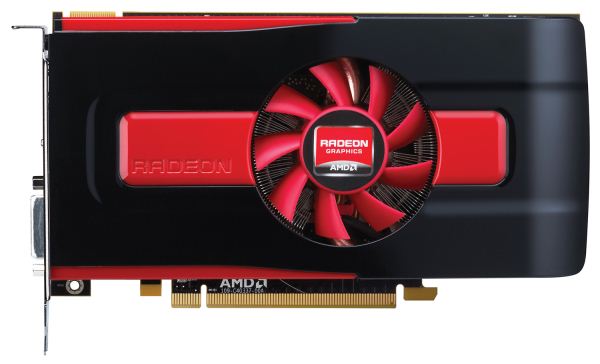
The Radeon HD 7850 Reference Design - Only Sampled To Partners
Starting as always with the cooler, the 7870 reference design is effectively a smaller version of the 7970 reference design. Here AMD is once again using a blower design with a slightly smaller blower, shrouded in the same hard red & black plastic as with the 7900. Underneath the shroud we find AMD’s heatsink, which utilizes a copper baseplate attached to 3 copper heatpipes, which in turn run into an aluminum heatsink that runs roughly half the length of the card. This is fairly typical for a blower design for a sub-200W card, but again almost all of the retail cards will be using a completely different open air design.
The 7870 PCB itself runs 9.5” long, with an additional .25” of shroud overhang bringing the total to 9.75”. Our card is equipped with 8 5GHz 256MB Hynix GDDR5 memory chips, the same 5GHz chips that we saw on the 7700 series. For the 7870 power is provided by a pair of 6pin PCIe power socket, while the sub-150W 7850 uses a single socket. Both cards feature a single CrossFire connector, allowing them to be paired up in a 2-way CrossFire configuration.
Meanwhile for display connectivity AMD is using the same configuration as we’ve seen on the 7900 series: 1 DL-DVI port, 1 HDMI port, and 2 miniDP ports. Interestingly, unlike the 7900 series and 7700 series there is a set of pads for a second DVI port on the card, and while AMD doesn’t make use of them at least one XFX card will. The 7800 series as the same display configuration options as the 7900 series though, so while it can drive up to 6 monitors it can only drive 2 TMDS type displays at once, and if you want to drive a full 6 monitors you’ll need a MST hub.
Finally, I wanted to touch on marketing for a bit. We typically don’t go into any detail on marketing, but with the 7800 something AMD did caught my eye. One of AMD’s marketing angles will be to pitch the 7800 series as an upgrade for the 5800 series; AMD doesn’t typically pitch cards as upgrades in this manner, and the 5800 comparison is especially odd.
At 2.5 years old the 5800 series is no longer the video card king but it’s also not particularly outdated; other than tessellation performance it has held up well relative to newer cards. More specifically, the 7800 series performance is roughly equal to the 6900 series, and while the 6900 series as a step up from the 5800 series it was not a massive leap. With its $350/$250 MSRP the 7800 series has common pricing with the 5800 series, but at only 20-40% faster than the 5800 it’s not the kind of step up in performance that typically justifies such a large purchase. Of course AMD’s conservative pricing has a lot to do with this, but at the end of the day it’s odd to call the 7800 series the upgrade for the 5800 series when the 7950 is the more natural upgrade from a performance perspective.


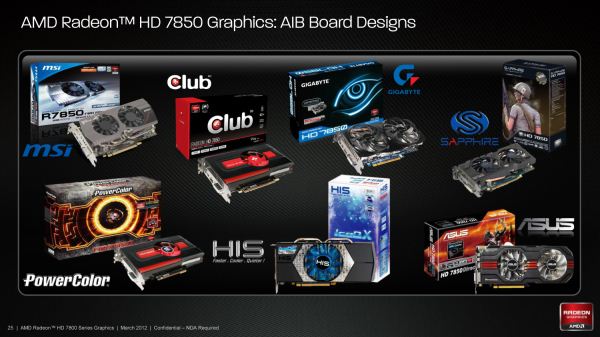
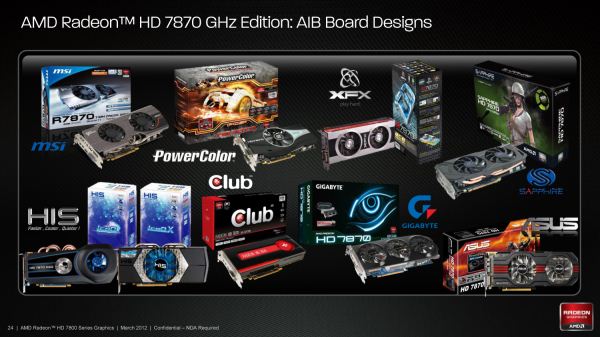

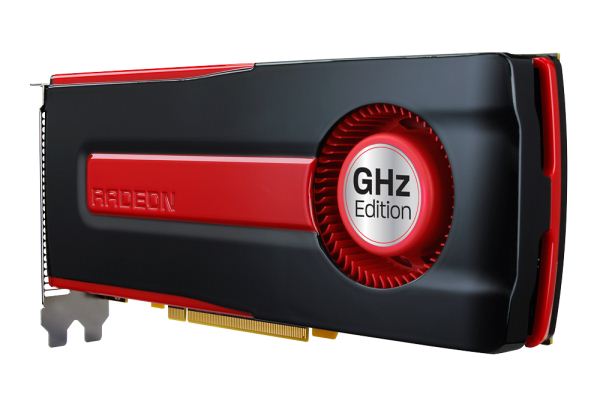












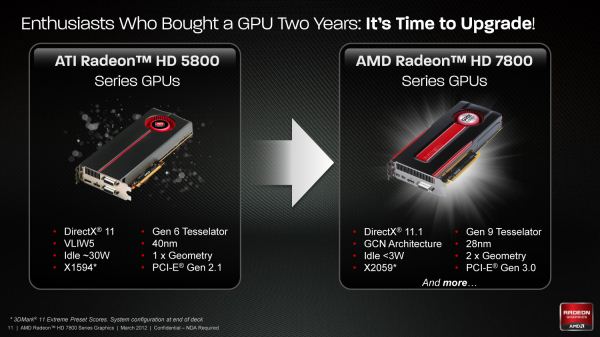








173 Comments
View All Comments
Exodite - Tuesday, March 6, 2012 - link
I have absolutely no problem with that.The apt comparison would be the 7900 series though, and those only really fail on price.
Which will likely change if Nvidia brings something competitive to the high end with Kepler.
Lets face it, until the current consoles die in a fire and/or display makers see fit to bring sensibly priced >1080p panels to the desktop there's really no need for more performance in the desktop space.
SlyNine - Monday, March 5, 2012 - link
The fact the things are sitting still.I'm running a 5870 which is basically 75% the performance of a 7970, and I paid 379 for the 5870. Which is also 75% of the cost of a 7970. The price of a 7970 is basically the exact same price structure as the 2 1/2 year old 5870, So we are stuck where we were in 2009, yay.
This is NOT how the computer world is supposed to work, and as big geek, I don't like it.
morfinx - Monday, March 5, 2012 - link
75% performance of 7970 would mean that it's 33% faster than a 5870. And that's just not accurate. I have a 5870 as well, so I was paying a lot of attention on how much faster the 7970 is in various reviews. Everything I've read indicates that it's anywhere from 70-110% faster at 2560x1600 resolution (I run 3600x1920, so likely even even more of a difference). That's not even even considering the massive overclocking headroom of the 7970 vs barely any OC headroom of the 5870. Overclocked, a 7970 is easily twice as fast as a 5870.Alpert - Tuesday, March 6, 2012 - link
The 6950 retailed for $299 and the 6970 retailed for $369 when they were released. 10-25% performance increase for every new series of cards is what to expect. Now we can clearly see these card perform better then the 6950/6970, hell a 7850 overclocks to what a GTX580 is capable of.The value of what was a $600 GTX580 card more then a year ago, The value of a $499 GTX580 today, you get a $300 7850.
The price you pay for performance is always going down just not in big steps.
Logsdonb - Monday, March 5, 2012 - link
These should be excellent cards for crossfire solutions, especially when combined with the new PCI 3.0 bus system. They represent significant improvements in heat, power, and noise at their performance levels. I think these would work well in small form factor gaming PCs, especially when combined with the upcoming Ivy Bridge CPUs, which max out at 77 watts. I don't want a loud, space heater that sucks down massive power for a computer. I have also noticed that cooler systems tend to last longer and have few problems. I feel confident that the prices will come down once the competition from Nvidia comes out next month.I am thinking that we are approaching a really nice time to upgrade if you like balanced systems that deliver excellent gaming performance in reasonable portable packages that wont disturb your personal environment with excess heat and noise. I intend on waiting for Ivy bridge and Kepler before pulling the trigger, but I am eagerly awaiting upgrading evertyhing.
claysm - Monday, March 5, 2012 - link
The price point on the 7xxx series cards seems to be a little too high at the moment, the only advantage they have is that that do outperform the GTX 5xx series cards in a number of ways (power consumption, performance, temps). The biggest problem with the 7xxx series is that they just don't perform that much higher at each price point than AMD's current 6xxx series cards. Why get a 7770 when you can, for the same money and MUCH more performance, get a 6870? The prices will drop when Kepler rolls around I'm sure, but for now, a little too high, given that most of the increases at each price point don't come in the realm of performance.CeriseCogburn - Thursday, March 8, 2012 - link
AMD has been listening to their little screaming fans who wailed that electric usage and core temps are all the rage....So now the amd fans need to PAY UP SOME $$$ for the nice electric consumption and core temp reduction... let's face it - they have told us all for years now those two things alone are well worth a purchase decision, PERIOD.
I guess it's time for them to dig down deep since their Master has responded with everything they declared of utmost importance.
What's wrong AMD fans ?
BrightCandle - Monday, March 5, 2012 - link
I would love to see Anandtech start to look into the stutter/inconsistent frame problems with these modern graphics card reviews. The techreport has been doing a good job in blowing the lid on the problem, but you guys should be able to start to apply pressure to AMD/NVidia to improve the situation. The minimum average is not the worst it can be, the worst frame time is what you need to worry about. Averages over a second just aren't accurate enough.loeakaodas - Monday, March 5, 2012 - link
These look like great performing cards that need a $50~$100 price drop & hopefully nVidia's new offering will force AMD to compete like they did with the legendary 4800 & 5800 series. I was hoping for a sensible upgrade path from my 2x5850's but it doesn't look like that exists yet, at least not at these price points. I'm better off of putting that money towards a large SSD upgrade, otherwise this midrange 2.5 year old system doesn't really beg for an upgrade.ET - Monday, March 5, 2012 - link
The OC 7850 beats everything hands down at the 2560x1600 resolution, which doesn't look right considering the rest of the benchmarks.Also, on the Skyrim benchmark page the writeup has "GPUs GPUs" on it.